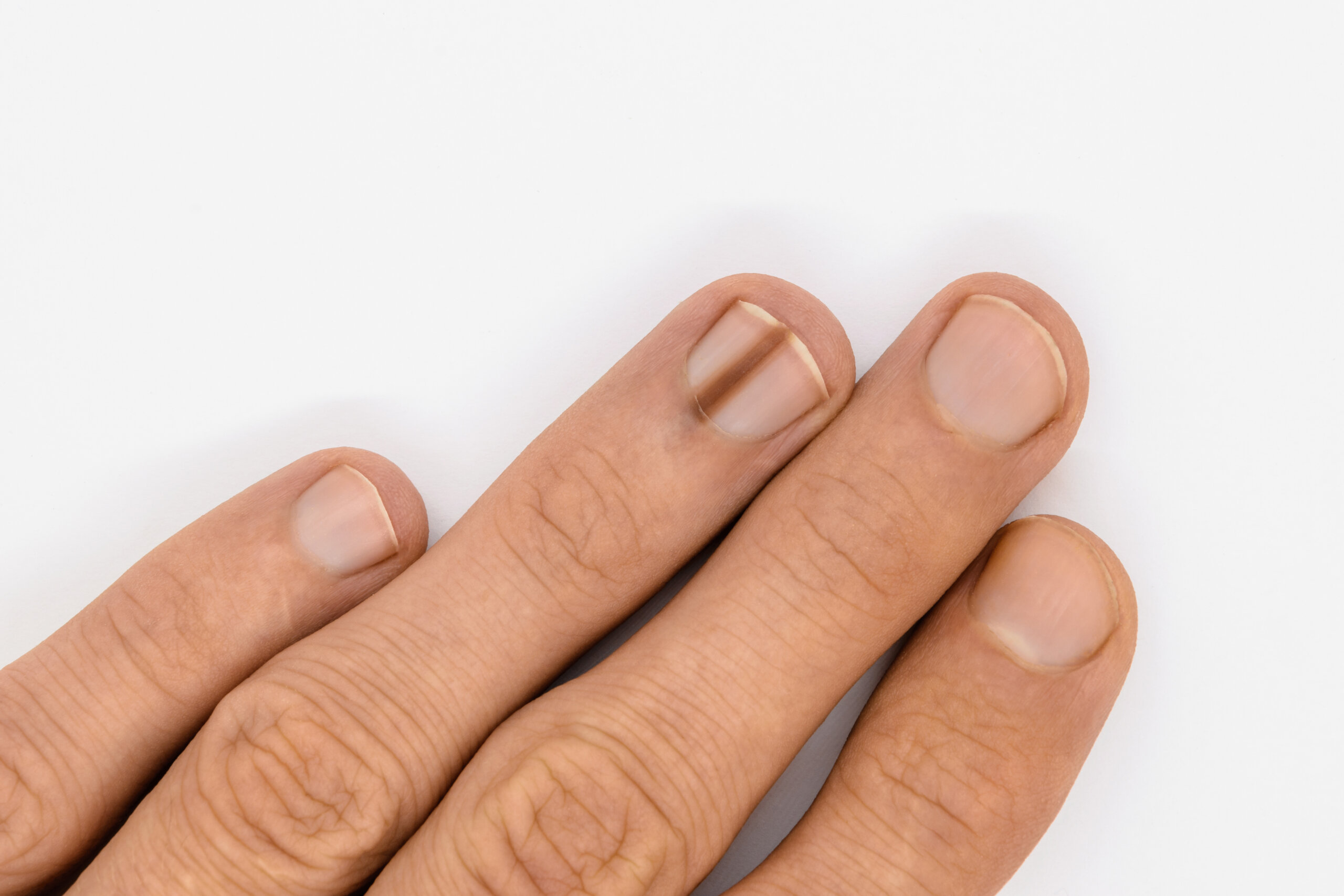While melanoma is a relatively rare form of skin cancer, the number of melanoma cases diagnosed has increased over the past several decades. Despite more overall cases, the melanoma mortality rate has decreased, in part due to earlier diagnosis. According to Dr. Yanes of U.S. Dermatology Partners Annapolis, “Early diagnosis is key to successfully treating melanoma. As awareness of melanoma warning signs improves, patients can reach out in the earliest stages of skin cancer development. Nail melanoma often goes overlooked because the changes in the nail can be subtle and more difficult to see. Knowing what to look for and taking care to examine nails regularly for warning signs of nail melanoma makes successful treatment more likely.” In this blog, Dr. Yanes walks through what nail melanoma is, risk factors and symptoms, and options for treatment and prevention of nail melanoma.
What Is Nail Melanoma?
Nail melanoma is also referred to as subungual melanoma. It’s a form of skin cancer that develops under the nails from melanocytes, the cells that make the pigment of the skin. Melanoma itself is one of the rarer forms of skin cancer, and subungual melanoma is one of the rarest forms of melanoma. Unfortunately, it is also one of the most aggressive forms of skin cancer. When cancer causes these cells to reproduce rapidly and irregularly, darker coloring appears. This is what causes the telltale dark, vertical lines associated with nail melanoma.
Causes and Risk Factors
When it comes to the cause of nail melanoma, Dr. Yanes says, “The underlying cause of nail melanoma isn’t entirely clear. Unlike other forms of skin cancer, nail melanoma isn’t likely to be caused by sun exposure. Instead, there are risk factors that increase chances for developing this condition.” These risk factors include:
- Age – older adults are more likely to be diagnosed with nail melanoma.
- Skin tone – those with skin of color are more likely to develop nail melanoma.
- Genetics – those who have a family history of melanoma, nail melanoma, or other types of skin cancer may be at greater risk.
- Trauma – damage to a nail may trigger the production of melanoma cells. This tends to be more common in damaged thumbs or big toes.
- Weakened immune system – those who have a compromised or weakened immune system due to an illness, organ transplant, or other condition may also be at greater risk for all types of skin cancer.
Signs and Symptoms of Nail Melanoma
Nail melanoma can be difficult to diagnose, so it’s important to monitor your nails for any of the following nail melanoma symptoms and warning signs:
- Black or brown vertical lines on the nail.
- General nail discoloration or discoloration of skin around the nail.
- Cracked or split nails.
- Nail deformities.
- A nail that lifts away from the nailbed.
- Swelling or inflammation of skin around the nail.
- Bleeding or ulcers under the nail.
Importance of Early Detection
As soon as you notice any of the warning signs of nail melanoma, especially if you are at higher risk, you should contact your dermatologist. The sooner we can begin treating nail melanoma, the more likely patients will make a full recovery. Additionally, early detection means that less invasive treatments will be more effective. Finally, treating nail melanoma and other forms of melanoma early increases long-term mortality rate. In order to ensure an earlier diagnosis, make sure to examine fingernails and toenails regularly as part of skin cancer self-exams. If you regularly paint your nails or use fake nails, be sure to completely remove polish and artificial nails periodically, so you can examine the nails, nail beds, and cuticles for signs of melanoma. If you notice any of the following symptoms, contact your dermatologist right away:
- Changes in shape of nails.
- Changes in color of nails.
- Nail that is pulling away or lifted out of the nailbed.
- Dents or divots in the nail’s surface.
- Irregular nail thickness.
Treatment Options for Nail Melanoma
In the past, Dr. Yanes says, “Amputation was a frequent nail melanoma treatment . Today, there are less invasive treatment options available. Efforts are made to avoid amputation, if possible, by surgically excising the nail unit without removing the underlying bone. To ensure patients have the best chances for recovery, we create individualized treatment plans and work alongside other medical specialists as a coordinated team.”
Schedule a Skin Cancer Screening Today
In addition to performing regular skin self-exams, it’s important to visit a dermatologist regularly for a professional skin cancer screening. The dermatologist can help you identify concerning changes in skin health, diagnose melanoma in early stages, and receive the proper treatment and develop effective skincare routines. If you’re ready to get started working with a professional dermatologist at U.S. Dermatology Partners, don’t hesitate to reach out to us by filling out our simple online scheduling form. Once we receive your appointment request, we’ll be in touch to finalize the details of your upcoming visit.
Find a location near me
or


